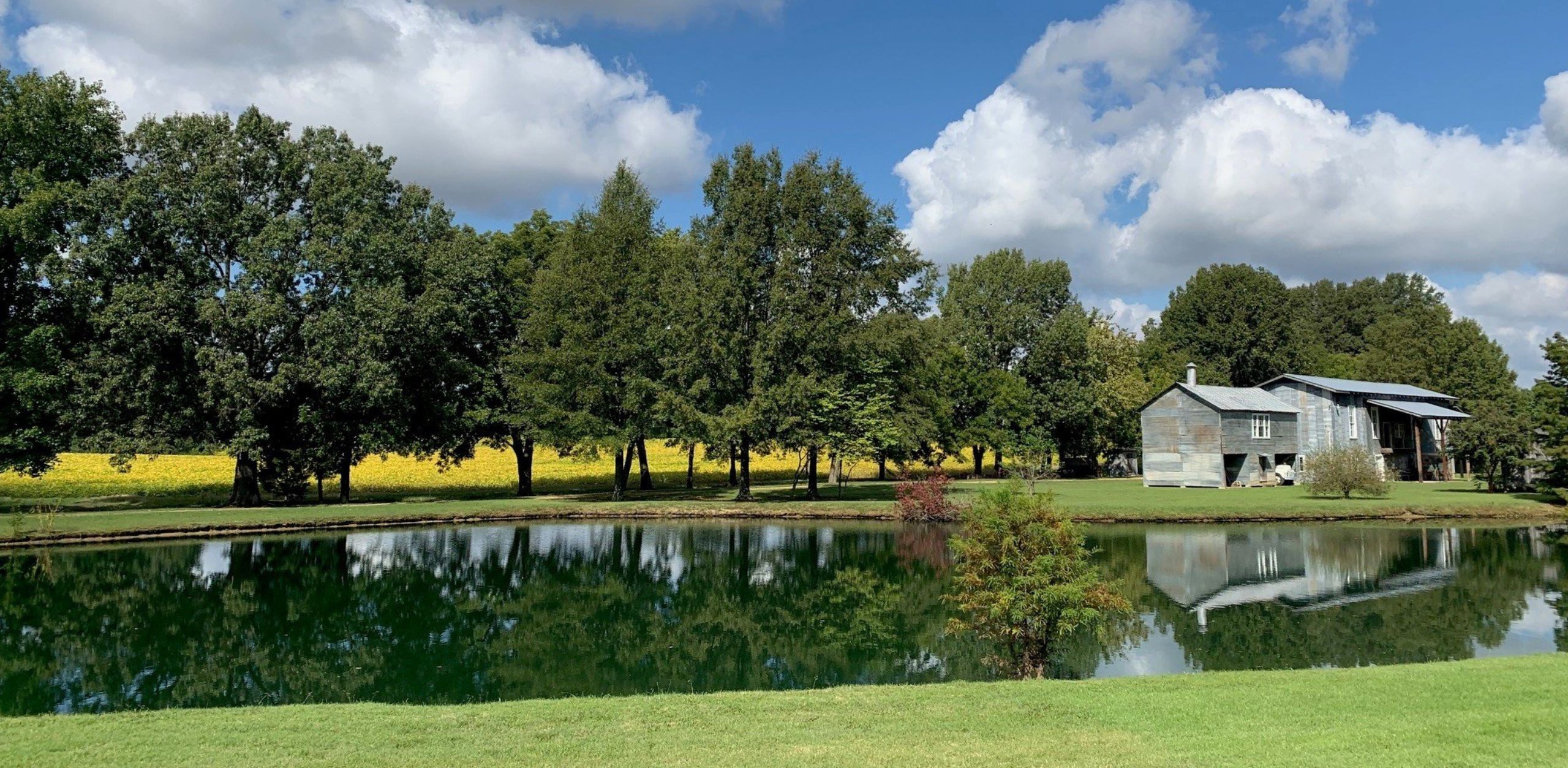Explore The Grounds
Louise May Pearson Arboretum
Over 100 species of trees are on display throughout the grounds in the state-certified arboretum. Guides are available at the train station at the entrance to Green Frog.
Landscaped Grounds and Fishing Ponds
There are four ponds at Green Frog to explore surrounded by farmland, including a blackberry and blueberry farm. Fishing is allowed -bring your own pole.
Historic Buildings
Included in your stay is access to the restored historic structures of Green Frog. Your self-guided tour will take you to the blacksmith shop, print shop (with working linotype machine), one-room schoolhouse and chapel. Green Frog is also home to Cotton Museum of the South which features an original cotton gin, seed house (with antique loom, display) and general store. Some guests have described their experience as spending a night at a museum!







